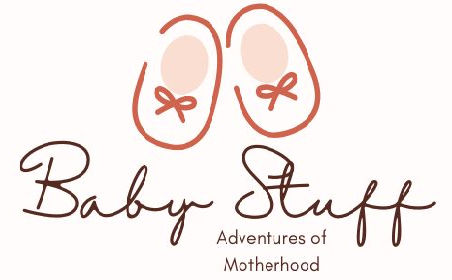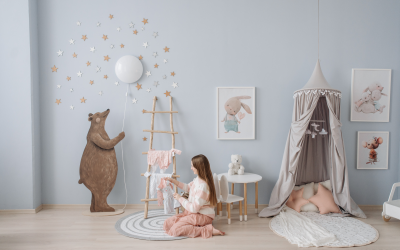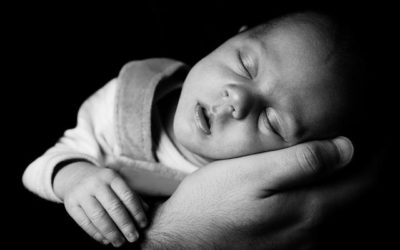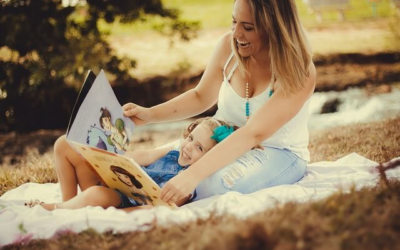Overheating isn’t simply a problem in the winter; it’s also perilous for babies who can’t yet manage their own body temperature on hot and humid days.
Here’s how you can keep your child safe:
- Remove the layers When the temperature rises over 75 degrees F, baby should only need one layer.
- Wear a light cap over the baby’s head Hats are necessary to shield baby from excessive sunlight, whether it is cold or hot.
- Consider becoming slimmer Use lighter clothes, especially at night, when it’s quite hot outside. Baby will almost certainly need one extra layer, such as a light sleeper shirt or a small sleep sack. A sleep sack is no longer necessary once a baby has rolled over. If you’re using a sling or carrier to carry your baby, make sure the material is breathable so your little one doesn’t become too overheated.
- Keep the baby out of the sun Although the Food and Drug Administration (FDA) does not recommend putting sunscreen on babies under the age of six months, most pediatricians recommend it. In hot or cold weather, it’s preferable to keep babies out of the sun completely. If you’re going to the beach, make sure there’s enough of shade and limit your time in the sun to a few minutes at a time, especially during the midday sun.
- Keep an eye on those peepers Make sure your baby’s eyes are protected from the sun with sunglasses that offer 100 percent UV protection. (You can also protect your baby’s skin by wearing her in UV clothes!)
What is the ideal temperature for a baby’s skin?
Your baby’s temperature should always be between 98 and 100 degrees F, regardless of the weather outside; a rectal reading is always the most accurate. When it’s outside the typical range, it could indicate disease. Furthermore, whether it’s summer or winter, the temperature in the baby’s nursery should remain between 68 and 72 degrees Fahrenheit. If your baby is premature, set the temperature to 72 degrees Fahrenheit.
When it’s too hot outside, a baby’s risk of SIDS rises. Hypothermia is when your child’s temperature drops to a dangerously low level as a result of being too cold. When your infant is sick and has a fever, outfit him in lighter, more comfortable clothing.
How to dress newborn for the cold?
Whatever reason you have for braving the cold with your infant, make sure he or she is well-bundled. These pointers may be useful:
- Consider the concept of layers Layering baby’s clothing is always a good idea because it retains heat between the layers. Starting with a thin sleeper onesie and adding as needed — maybe a long sleeved top and leggings, or even a snowsuit if your little one will be in very chilly temperatures – thin cotton garments work great.
- Keep your head down, make sure your child is fully clothed from head to toe. Make sure your baby is wearing mittens, gloves, a hat, thick socks, and boots if you need them.
- Outside, don’t forget to bring blankets You can use a blanket and/or your stroller’s rain cover as a plus-one layer if you’re going out in the stroller; they can keep the elements out while keeping some heat in.
- Follow the guidelines for car seat safety When you get in the car, take off baby’s bulky outerwear since it can compress beneath the strap and cause the harness to be too slack in the event of an accident. In the vehicle seat, he can still wear many thin layers, a hat, and mittens.
- Take care not to overheat, Overheating and SIDS are more likely in babies who are wrapped in too many layers of blankets or clothing (sudden infant death syndrome). Remove your baby’s winter garments as quickly as possible if you’ve been out.
- Maintain a cool indoor temperature are you putting your sweetie to bed or taking a nap? Keep the indoor temperature between 68 and 72 degrees Fahrenheit in the winter and summer. Check your baby’s neck to determine if he’s sweating excessively, to ensure he’s comfortable. A little moisture is to be expected with a newborn, but pools of perspiration are not.
- At nap and bedtime, leave the blankets at home, Skip the blankets and dress him in a warm sleeper or sleep sack. SIDS is also linked to sagging bedding.
How do I know baby is too cold or too hot?
Maintain a temperature of 65-72 degrees Fahrenheit in your baby’s room (18-21 degrees Celsius).
Many parents believe that a baby must be wrapped in multiple layers, but this is not the case! Overheating is more common in infants, and overheating raises the incidence of Sudden infant death syndrome, particularly in the first six months of life. But don’t be concerned! Experts recommend keeping your infant between 65 and 72 degrees Fahrenheit (18-21 degrees Celsius) during the day.
A thermostat is the most convenient way to monitor your infant’s room temperature, but if your room or camera monitor lacks one, a portable indoor thermometer can suffice.
Placing your palm on your baby’s head, neck, or stomach to check whether it is too warm is the quickest method to assess if he or she is too hot. Sweating, damp hair, rapid breathing, flushed cheeks, and heat rash are all signs of overheating. If your baby is fussy even after a feeding and after being changed, it could be a sign that they are uncomfortable or overheated.
If a baby is too chilly, its hands and feet may become too cold, causing them to become less active and lethargic. A baby’s hands or feet may even turn bluish in some situations. This is usually not a cause for alarm, and warming the infant up is a good idea.
As a general rule, an infant need one additional layer of clothing than you would in the identical situation. Assessing the TOG level required for your baby’s swaddle or sleep bag is another useful technique to select how to outfit your infant.
TOG stands for “Thermal Overall Grade” and is used to determine the thermal insulation of a product. A TOG grade is assigned to sleepwear based on how warm it will be. The warmer the product, the greater the TOG level. Because TOG measures thermal resistance, which is dependent on the fabric, it is not always true that the thicker or heavier the clothing, the greater the TOG.
Clothes (regardless of the season)
The baby’s first garments should be soft, comfy, and made of natural fibers. Because neonates grow and gain weight quickly, don’t buy too much.
- Diapers (disposable and reusable)
- Onesies (both long- and short-sleeved): 6 pcs.
- Sleep suits: 3–5 pcs.
- Rompers: 5–6 pcs.
- A cotton sweater
- A zip-up sweatshirt
- Hats: 2–3 pcs.
- Socks: 6 pairs
- Soft baby booties: 2 pairs
What you’ll need in summer?
- For the great outdoors, a light jumpsuit.
- A brimmed bonnie cap (to keep the sun out of the baby’s eyes)
- A stroller and car seat cover made of cotton
- A curtain for the stroller
- Insect repellant and sunscreen (be sure to consult your pediatrician first)
What you’ll need in winter?
- A comforter
- Diapers made of flannel
- Warm sleepwear
- Warm rompers and a sweater are a must-have.
- Hats and booties made of wool
- Outdoors, a warm jumpsuit
How to dress newborn
Many babies find the process of clothing and undressing distressing. The less stressed you and your baby are, the faster and calmer you are!
Here are a few pointers that might be useful:
- Place your infant on a soft surface once the room is warm enough.
- Put a nappy on your infant in case he or she needs to go.
- Stretch the neck of a singlet and put it on from the back, supporting your baby’s head. As you draw the front over your baby’s head, make sure it doesn’t scrape his or her face — young babies can get quite unhappy if their garments scrape their faces.
- When undressing, do the opposite, avoiding letting the clothing touch your baby’s face.
- If your infant is wearing a jumpsuit, unbutton or zip it and lay him or her on top. Place the arms and legs of the infant in the holes and close the zip or snap closures.
- Make sure your baby’s legs and arms are covered when going out in the sun – but if at all possible, keep your infant out of direct sunlight.
How do you wash newborns clothes?
Baby items can be washed with the rest of your laundry, but powerful detergents and fabric softeners should be avoided. ‘Sensitive’ or ‘gentle’ laundry detergents are less likely to irritate your baby’s skin.
Clothes that have been soiled should be soaked in diaper sanitizer before being washed. Even with a bib, your baby’s clothes will get smeared in food and drink, so nappy sanitizer makes a convenient pre-soak once your baby starts eating solids.
What is the ideal temperature for a baby’s room?
Think of Goldilocks when it comes to your baby’s nursery: you don’t want it to be too hot or too cold. In general, if you think the room is too chilly, your baby will feel the same way, and if you think the room is too hot, your baby will feel the same way.
In the summer and winter, keeping the temperature between 68 and 72 degrees F is a suitable range. When the room is too hot, your baby’s chance of SIDS increases; when the room is too cold, your infant can easily get uncomfortably cold and wake up unnecessarily.
How should I dress my baby for bedtime?
Dress baby in one more layer than older kids — a one-piece sleeper plus a sleep sack, for example — should enough. If it’s particularly cold outside, you may add an additional layer under his sleeper, such as a long-sleeved onesie. When it’s extremely hot outside, opt for lighter-weight textiles. It has been proven that swaddling your kid with a swaddle blanket or a sleep sack will help him sleep longer. Simply follow these safety guidelines:
Make sure the sleep sack for your baby isn’t too big with extra fabric that could tangle. Once your baby can roll over, stop swaddling him since it increases the danger of asphyxia. You can still keep your kid warm. Once your baby can roll over, stop swaddling him since it increases the danger of asphyxia. You can still use sleep sacks meant for older babies to keep baby warm while allowing their arms to remain free.
Avoid swaddling your baby too firmly around the hips, as this can interfere with hip growth. To lessen the risk of SIDS, always put babies to bed on their backs.
Baby changes tables
Changing tables provides you with much-needed assistance. You can keep vital objects within arm’s reach with drawers and shelves, so you’re never tempted to leave your infant alone. Every baby changing unit is also designed to be at a comfortable height so that you can easily swoop in for some baby nuzzling.
Also interesting to read:
- Newborn wouldn’t sleep unless held
- Newborn dry lips: Sign, Causes and Treatments
- When To Switch Nipple Sizes On Baby’s Bottle – A Full Guide!
- HOW TO AVOID BURNOUT AS A STAY AT HOME MOM
- Reasons CPS can take your Newborn
- Newborn sticking tongue out
- Newborn Snoring
- How To Clean Baby Ears
- Newborn Swim Diapers
- Newborn Sleeps With Mouth Open





